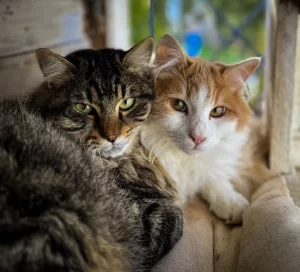Navigating Public Transport as an Introvert
When I first took a public bus on my own as a teenager, it felt like freedom. I felt grown-up and free from my parents’ supervision. But as I got older, using public transport stopped being an act of independence and became more of a necessary evil—efficient and affordable, yes, but also full of talkative strangers.
It usually starts with a question about the ride—something like, “What’s the next station?” or a quick confirmation that they’re on the right line. Then comes a comment about the weather or traffic. And before you know it, the person sitting next to you is telling you how their kid is adapting to kindergarten, how cute their dog was barking during yesterday’s storm, and why they no longer trust gluten. Meanwhile, all you wanted was to listen to your podcast and stare out the window in peace.
Over the years, I’ve learned a few tricks to make public transport as peaceful and interaction-free as possible. Let me share some tips to help you survive (and even enjoy) your commute.
1. Create a Barrier with Headphones
Even if you’re not listening to anything, wearing headphones (the bigger and brighter the better) is a universal signal that says, “I’m in my own world, do not disturb.” Noise-canceling ones are even better because they also block out unwanted chatter nearby.
2. Avoid eye-contact
Even if you’re wearing headphones, there are still people who will try to grab your attention—waving, tapping, or even gesturing exaggeratedly—just to make you take them off and hear what they want. That’s why the best strategy is to avoid making eye contact altogether. Keep your gaze on your phone, your book, on the ground or fixed out the window—anywhere but at someone who looks like they’re gearing up for a chat.
3. Choose Your Seat Wisely
When you enter the train, bus, or subway, try to find the least crowded space—ideally toward the end of a row, if possible. The farther from the entry door, the better, as most people won’t take more steps than necessary. Opt for a window seat whenever you can; it not only gives you a view to zone out to but also creates a physical barrier between you and the aisle, reducing the chances of someone choosing the seat next to you. It’s a small buffer, but nay make a big difference.

4. Bring a Prop
A book, a Kindle, or even your phone can be a great prop to signal that you’re occupied. Staring intently at your device or flipping through pages is usually enough to deter most people from interrupting you. Personally, an e-reader always works best for me. I tend to avoid physical books, since a visible cover can sometimes spark a conversation—usually something like, “Is that book any good?” On my phone, I always use a privacy filter so the people around me can’t see my screen. It adds an extra layer of personal space, even in a crowded setting.
5. Plan Ahead and Travel During Off-Peak Hours
If your schedule allows, avoid rush hour—fewer people mean fewer chances of unwanted interactions, and you’ll have more space to breathe. Combine this with planning your route ahead of time so you know exactly where you’re going and when to get off. This not only helps you feel more in control but also minimizes the need to ask strangers for directions. Plus, planning ahead can give you a little extra time to skip a crowded bus or train and wait for the next one.
6. Embrace the Power of Body Language
Crossed arms, avoiding eye contact, and angling your body slightly away from others can send a clear, non-verbal message: “I’m not up for chatting.” It might feel a bit awkward at first, but these subtle cues are often enough to discourage conversation without seeming rude. You can also try closing your eyes and giving the impression that you’re trying to sleep—another quiet signal that you’re not available for small talk. Altogether, it’s an effective way to create a bubble of personal space, even in a crowded train or bus.
7. Have an Exit Strategy
If all else fails and you find yourself stuck in an uncomfortable conversation, have a polite excuse ready. A simple “This is my stop” or “I need to make a quick call” can be your easy way out. I can’t even count the number of times I’ve gotten off at the wrong stop just to escape a chatty crowd. Sometimes, I’d rather wait for the next bus—or even walk—than spend another minute in a conversation I never chose to be part of.
Navigating public transport as an introvert doesn’t have to be a nightmare. While public transport etiquette should ideally be a universal language, in reality, it varies widely—and in many of the countries I’ve visited, it’s not always followed. From overly friendly strangers to crowded, noisy rides, the challenges of public transport are real—and often part of our daily commute. For introverts, these situations can be especially draining. However, with a few mindful strategies and a little preparation, your commute doesn’t have to feel like a social obstacle course. It can become a more peaceful, predictable, and low-interaction experience—one that protects your energy instead of depleting it.









